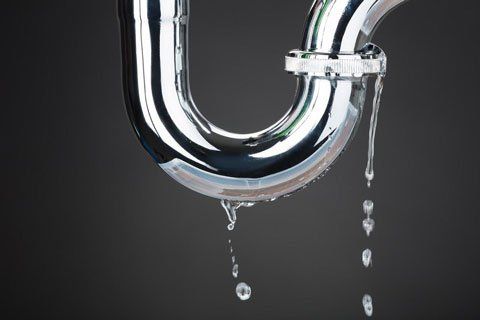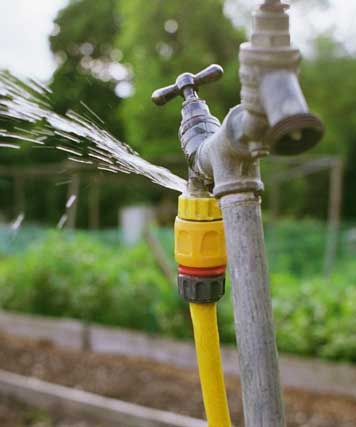Just how to Check If Your House Has a Concealed Leakage
Just how to Check If Your House Has a Concealed Leakage
Blog Article
What're your opinions about Hacks to detect leaks?

Early detection of dripping water lines can mitigate a possible calamity. Apart from conserving you cash, it will certainly lessen the irritation and disappointment. The minute you discover a leak, calling your plumber for fixings is the best solution. Nevertheless, some little water leaks might not show up. If you can not find it with your naked eyes, right here are some hacks that assist.
1. Analyze the Water Meter
Every home has a water meter. Examining it is a proven way that helps you discover leaks. For starters, turn off all the water sources. Make sure no person will certainly purge, utilize the tap, shower, run the cleaning maker or dish washer. From there, most likely to the meter as well as watch if it will certainly transform. Given that no person is utilizing it, there must be no activities. If it relocates, that indicates a fast-moving leak. If you find no modifications, wait an hour or 2 and also inspect back once again. This indicates you may have a slow leak that can also be underground.
2. Check Water Intake
Evaluate your water bills and also track your water usage. As the one paying it, you ought to notice if there are any kind of inconsistencies. If you find sudden changes, regardless of your intake being the same, it means that you have leakages in your plumbing system. Keep in mind, your water costs ought to drop under the exact same range on a monthly basis. An unexpected spike in your bill shows a fast-moving leak.
Meanwhile, a constant boost monthly, despite having the same behaviors, shows you have a slow leakage that's also slowly rising. Call a plumber to thoroughly inspect your residential or commercial property, particularly if you really feel a warm area on your flooring with piping underneath.
3. Do a Food Coloring Test
When it comes to water usage, 30% comes from toilets. If the color somehow infiltrates your dish throughout that time without flushing, there's a leak in between the tank as well as dish.
4. Asses Outside Lines
Do not forget to inspect your outside water lines as well. Examination spigots by connecting a garden hose. Ought to water leak out of the link, you have a loosened rubber gasket. Change this and also ensure all links are limited. If you have actually obtained a sprinkler system, it will help get it skillfully checked out and kept each year. One little leakage can waste tons of water and spike your water costs.
5. Evaluate the circumstance as well as evaluate
Homeowners should make it a habit to examine under the sink counters and even inside cabinets for any type of bad odor or mold development. These two red flags indicate a leak so timely interest is required. Doing routine assessments, also bi-annually, can conserve you from a significant issue.
A lot more importantly, if you recognize your home is currently old, maintain a watchful eye on your heating systems, hose pipes, pipes and so on. Look for discolorations and weakening as the majority of pipelines and devices have a life expectancy. They will additionally naturally deteriorate due to wear and tear. Don't wait for it to intensify if you think leaking water lines in your plumbing system. Call a professional plumber immediately so you do not end up with an awful mess in your house.
Early discovery of dripping water lines can alleviate a potential disaster. Some little water leakages may not be visible. Checking it is a proven means that helps you uncover leaks. One small leakage can waste bunches of water as well as increase your water bill.
If you presume dripping water lines in your plumbing system, don't wait for it to rise.
WARNING SIGNS OF WATER LEAKAGE BEHIND THE WALL
PERSISTENT MUSTY ODORS
As water slowly drips from a leaky pipe inside the wall, flooring and sheetrock stay damp and develop an odor similar to wet cardboard. It generates a musty smell that can help you find hidden leaks.
MOLD IN UNUSUAL AREAS
Mold usually grows in wet areas like kitchens, baths and laundry rooms. If you spot the stuff on walls or baseboards in other rooms of the house, it’s a good indicator of undetected water leaks.
STAINS THAT GROW
When mold thrives around a leaky pipe, it sometimes takes hold on the inside surface of the affected wall. A growing stain on otherwise clean sheetrock is often your sign of a hidden plumbing problem.
PEELING OR BUBBLING WALLPAPER / PAINT
This clue is easy to miss in rooms that don’t get much use. When you see wallpaper separating along seams or paint bubbling or flaking off the wall, blame sheetrock that stays wet because of an undetected leak.
BUCKLED CEILINGS AND STAINED FLOORS
If ceilings or floors in bathrooms, kitchens or laundry areas develop structural problems, don’t rule out constant damp inside the walls. Wet sheetrock can affect adjacent framing, flooring and ceilings.
https://www.servicemasterbyzaba.com/blog/how-to-detect-water-leakage-in-walls/

I was shown that write-up on Leaking water lines through someone on our other site. Do you know somebody else who is occupied with the subject? Do not hesitate to promote it. I treasure reading our article about Locating water leaks.
Report this page